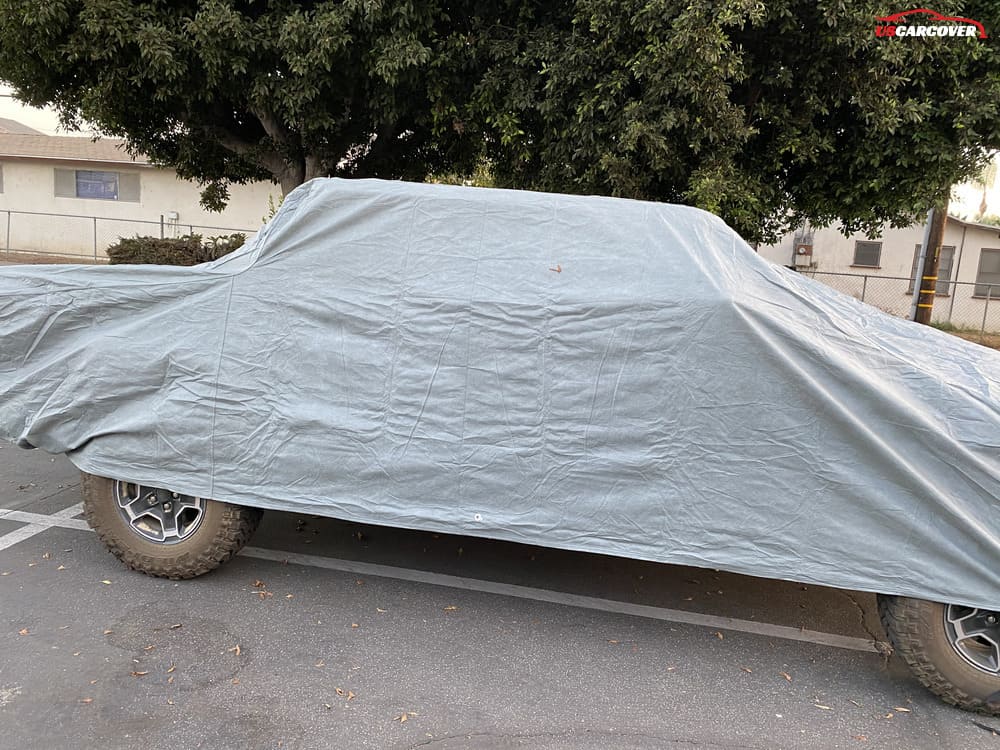
Car cover materials play a crucial role in protecting your vehicle from environmental damage. Choosing the right material ensures maximum protection against rain, UV rays, scratches, and dirt while preserving your car’s value. This article explores 10 common car cover materials, analyzing their features, benefits, and best uses to help you make an informed decision. Whether you park indoors or outdoors, understanding these materials is key to finding the perfect cover for your vehicle.
Key Factors in Choosing Car Cover Materials
When selecting a car cover material, consider the following key factors to ensure optimal protection:
Weather Resistance: A good car cover must protect your vehicle from the elements. Look for materials that can withstand rain, snow, UV rays, and dust to keep your car safe from environmental damage.
Durability: The material's durability determines how long your cover will last. Stronger fabrics resist wear and tear, making them ideal for long-term use, especially in harsh weather conditions.
Breathability: Breathable fabrics allow moisture to escape, preventing mold and mildew buildup under the cover. This is especially important for cars parked in humid or moist environments.
Softness: A soft interior is essential to avoid scratches and paint damage. Opt for materials that offer a gentle touch, particularly for luxury or classic cars that require extra care.
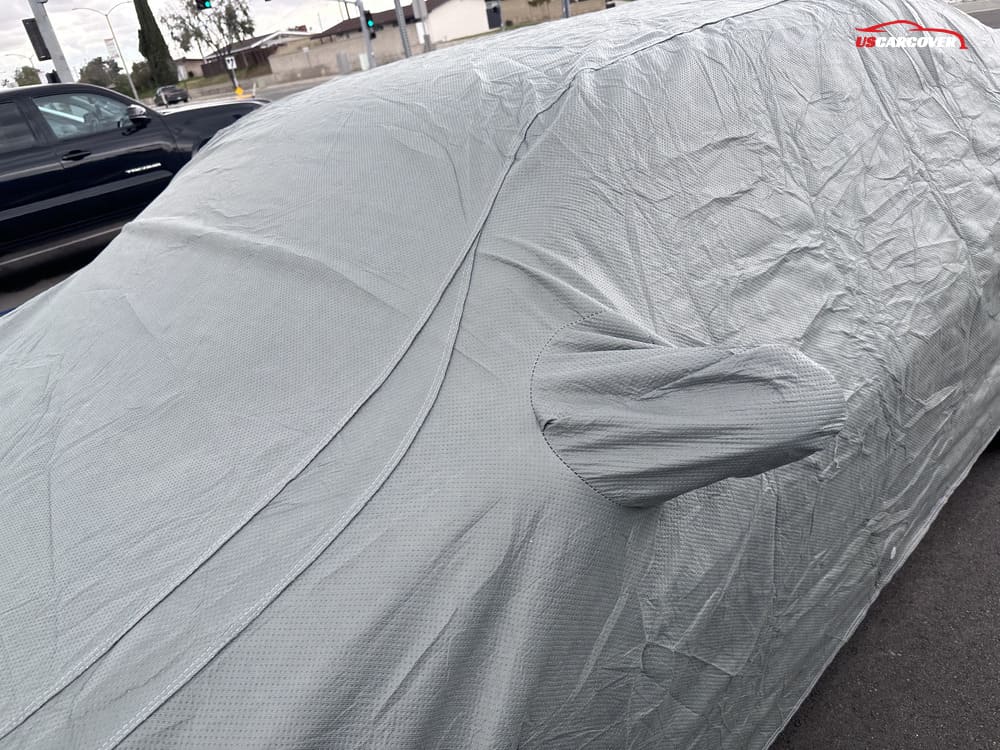
Related posts: Advantages and Disadvantages of Using a Car Cover
10 Common Types of Car Cover Materials: Analysis and Evaluation
1.Polypropylene
Polypropylene is a lightweight, affordable option perfect for indoor use. It provides basic protection against dust and dirt but offers limited weather resistance.
Affordable and lightweight, but best for indoor use. It lacks weather resistance and is not suitable for long-term outdoor protection.
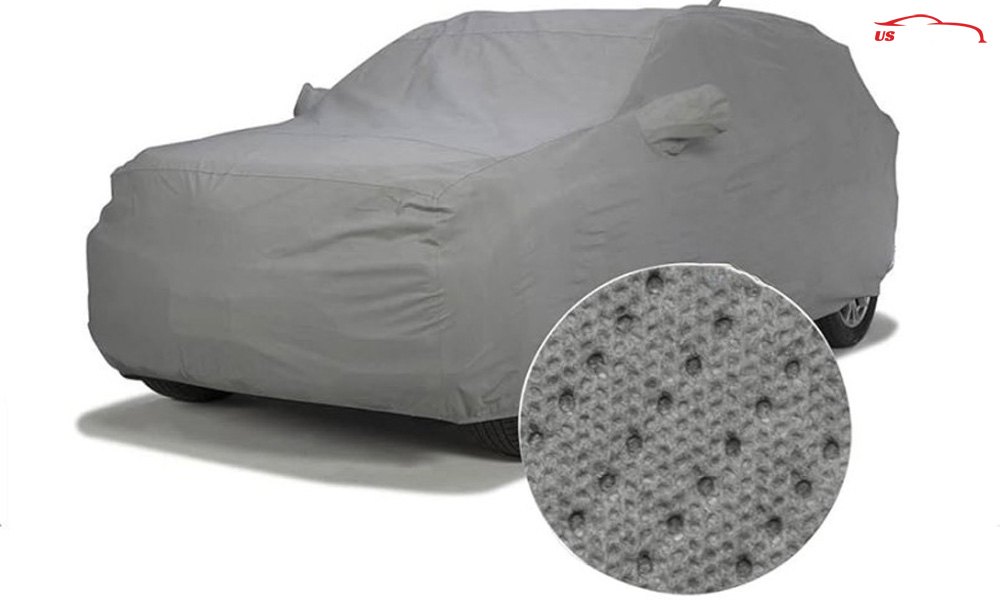
2. Polyester
Known for its durability, polyester is a versatile material suitable for both indoor and outdoor use. It’s often treated with coatings for enhanced water resistance and UV protection.
A versatile option, offering good durability and weather resistance. Ideal for both indoor and outdoor use, it provides solid UV and water protection.
3. Nylon
Nylon is highly resistant to tearing and is ideal for windy environments. However, it offers limited UV protection and may not be the best choice for long-term outdoor exposure.
Known for its tear resistance, nylon is excellent in windy environments but doesn’t offer strong UV protection. It’s best for light outdoor use.
4. Polyurethane-Coated Fabrics
These materials are waterproof yet breathable, offering excellent weather resistance. Ideal for all-weather protection, polyurethane-coated covers are perfect for harsh outdoor conditions.
Waterproof and breathable, making them great for all-weather protection. However, they may not be as durable in extreme conditions compared to heavier materials.
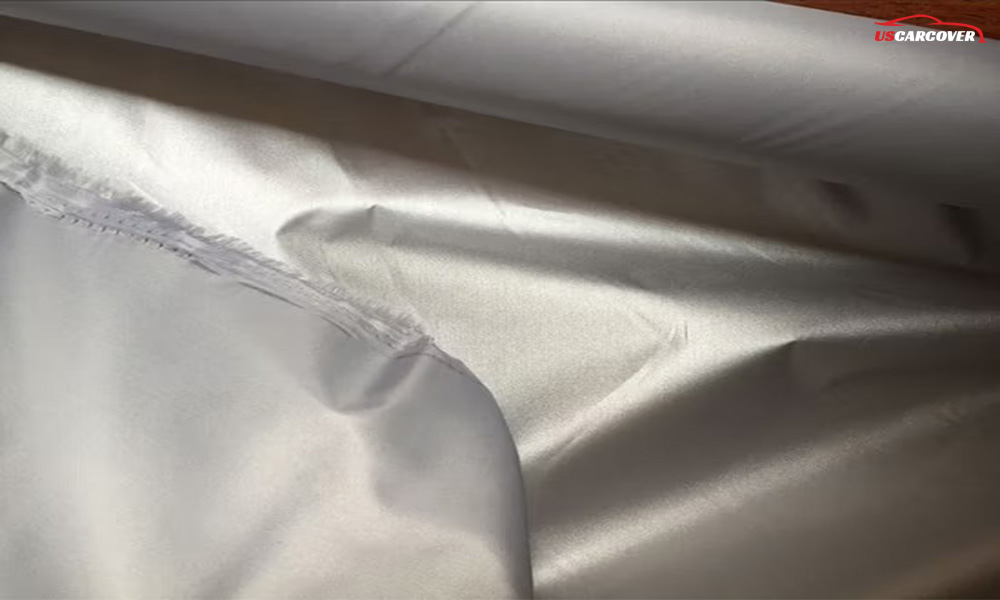
Related posts: Car Cover for All Seasons: What's the Best Material?
5. PVC (Polyvinyl Chloride)
PVC is a fully waterproof material that provides superior protection against rain and snow. However, it lacks breathability, making it less suitable for long-term use in humid areas.
Offers superior waterproofing, ideal for extreme weather. However, its lack of breathability makes it unsuitable for long-term use, especially in humid areas.
6. Fleece-Lined Fabrics
Fleece-lined covers are soft on the interior, making them ideal for luxury or classic cars. They prevent scratches while offering basic protection for indoor storage.
Soft and gentle, perfect for luxury cars stored indoors. While they prevent scratches, they don't offer significant weather protection.
7. Spandex-Blend Materials
Spandex-blend fabrics are stretchable and provide a form-fitting design. These covers are popular for show cars due to their sleek appearance, but they offer limited protection against the elements.
Excellent for show cars due to their form-fitting nature, but provide minimal protection against elements. Ideal for occasional use but not for regular exposure.
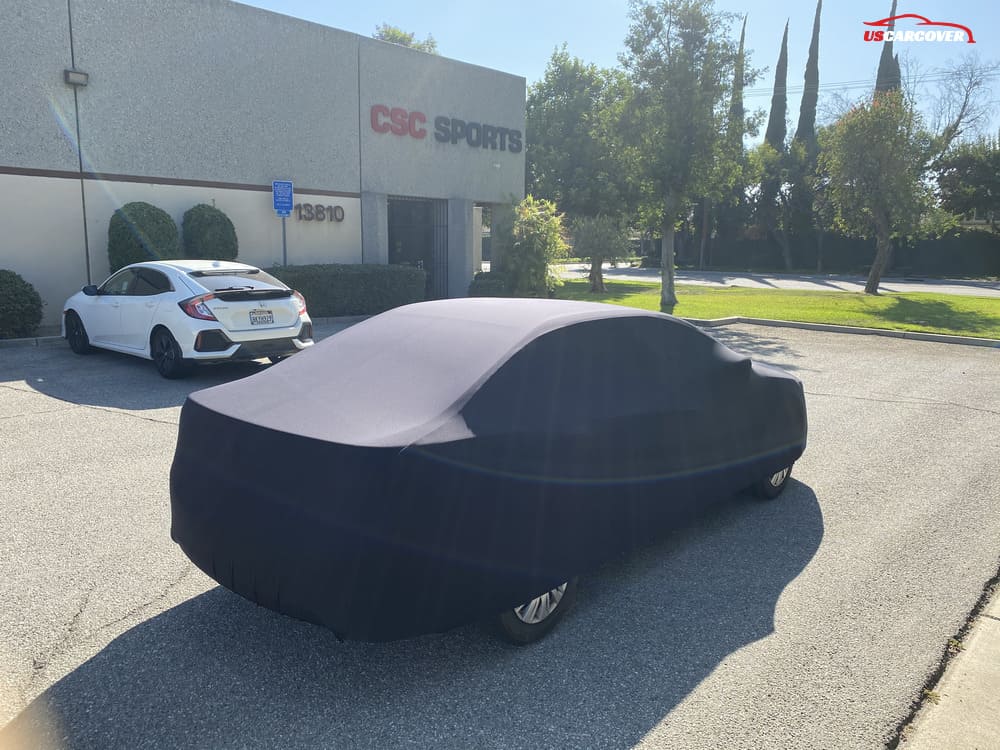
8. Cotton-Blend Fabrics
Cotton-blend covers are eco-friendly and gentle on your car’s paintwork. They are best for indoor storage and provide minimal weather resistance compared to other materials.
Eco-friendly and gentle on the paint, but limited in terms of weather protection. Best for indoor use with low exposure to the elements.
9. Reflective Aluminum Fabric
Reflective aluminum is highly effective at protecting against UV rays and heat, making it the ideal choice for hot, sunny climates. These covers shield your car from the sun’s harmful rays.
Great for UV protection and heat resistance, making it perfect for hot climates. It may not be the best choice for areas with heavy rain or snow.
10. Multi-Layer Composite Materials
These covers combine several layers of materials for comprehensive protection. Multi-layer composites offer durability, weather resistance, and excellent all-around protection, making them ideal for extreme conditions.
Offers the best all-around protection, combining durability, weather resistance, and UV protection. Ideal for those looking for premium coverage in harsh conditions.
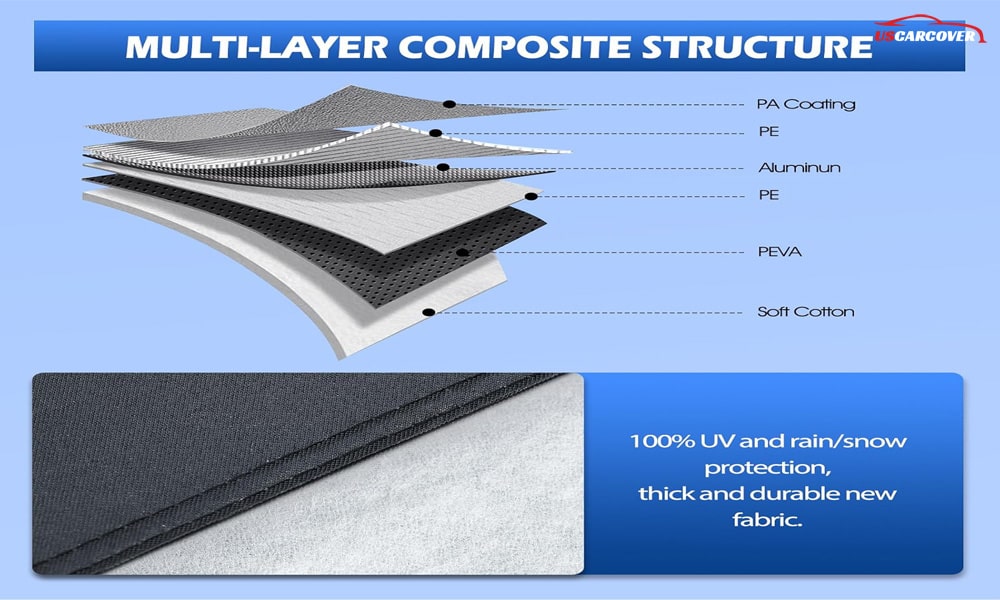
Related posts: 10 Tips to Prevent Theft for Your Car
How to Choose the Right Material for Your Car
Selecting the right car cover material involves evaluating several key factors based on your specific needs. Here’s how to make an informed decision:
Assess Your Needs
Determine where you park your car and the type of protection required. If you park indoors, lighter materials like cotton-blend or fleece-lined fabrics are ideal. For outdoor parking, consider more durable, weather-resistant options like polyester or polyurethane-coated fabrics.
Consider Your Climate
Different materials perform better in specific weather conditions. For rain and snow, opt for PVC or polyurethane-coated fabrics. For sunny climates, reflective aluminum fabric offers excellent UV protection. If you live in a humid area, go for breathable fabrics like polyester to prevent moisture buildup.
Set a Budget
Cost is an important factor. Polypropylene and cotton-blend fabrics are budget-friendly, while multi-layer composite materials and reflective aluminum tend to be higher-end options with premium protection.
Consider the Type of Car
For luxury or classic cars, you’ll need a material that is gentle on the paintwork like fleece-lined or cotton-blend fabrics. For daily drivers, more robust materials like polyester or nylon offer excellent protection without breaking the bank.
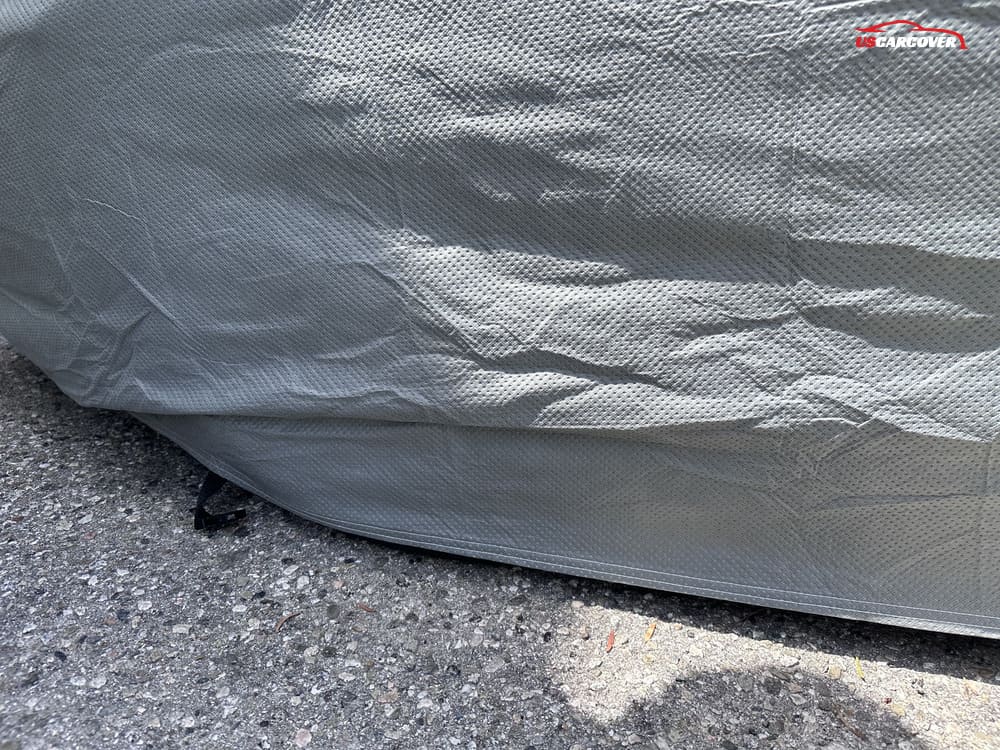
Related posts: 10 Tips to Prevent Scratches for Your Car
Conclusion
Choosing the right car cover material is essential to ensuring your vehicle remains protected from the elements and maintains its condition over time. Whether you need weather resistance, durability, or paint protection, there’s a material designed to meet your specific needs. By considering factors like climate, usage, and budget, you can confidently select a cover that offers the best value and protection for your car. For top-quality, durable, and weather-resistant car covers, explore options like those offered at US Car Cover for the ultimate in vehicle care.
